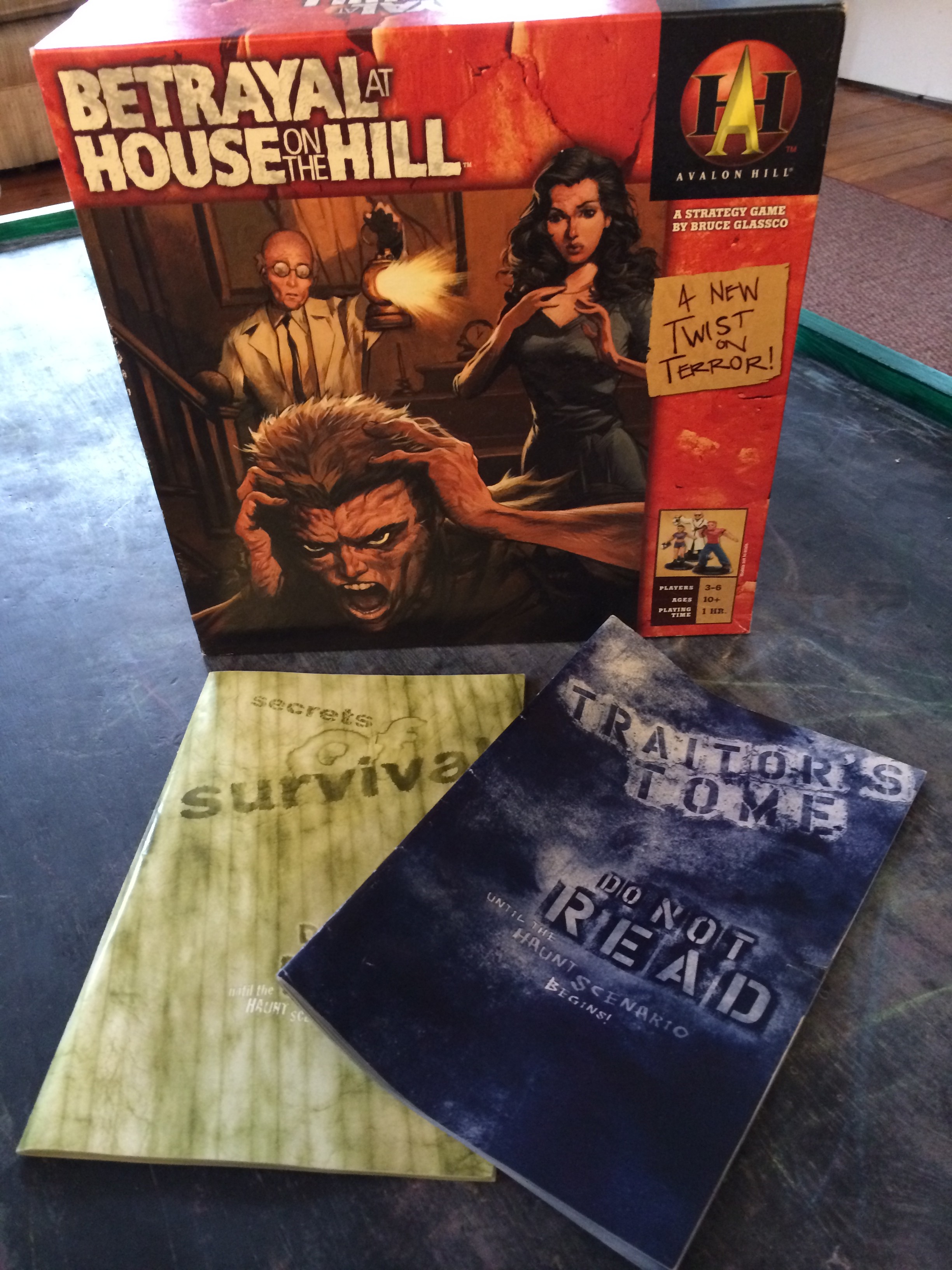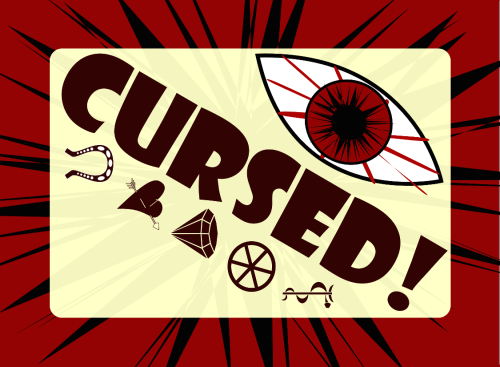Throwback Thursdays: Betrayal at the House on the Hill

Betrayal at the House on the Hill (a.k.a The Haunt in our gaming circle after the game’s second phase) was originally published by Avalon Hill and WotC released a second edition in 2010 . Since this is a Throwback Thursday post, and since we see no reason to buy a new edition of a game when the copy we have is still in great shape, this is a review of the first edition. Also, we hope this makes you gamer geeks out there jealous. We actually have two copies of the first edition, just in case something happens to one of them.
Basic Gameplay
First off, this really is a game for 3+ players, you cannot skimp and have much fun with fewer. For a truly exciting two hours, we strongly recommend you find at least a fourth. This usually leads to a more interesting house layout as well as giving the non-traitors plenty of collaboration. The Haunt plays on a tile-based map, with tiles added as players move about the house. In the second phase of the game, one of the players becomes the Traitor and tries to do away with the rest of the group. Either the Traitor wins, or everyone else does. The Us vs Them setup allows for heroic self-sacrifice, something rare in non-RPG tabletops.
Exploration Phase
You start The Haunt on a single game tile representing the foyer of the spooky haunted house you have foolishly decided to explore. Each player chooses one character based on their preferred style of gameplay (the smart one, the strong one, the fast one, etc.) and you take turns moving the characters around the house, discovering rooms as you progress. Every time you walk through an unconnected doorway, draw a tile from the stack and place it on the table. Usually, something gruesome will happen to you next and, if you survive, you may pick up a useful item. Every time someone discovers an Omen (think nifty artifact with powerful, but not necessarily beneficial, effect), some special dice are rolled. The more Omens in play, the more likely that dice roll is to bring The Haunt!
The Haunt
In addition to the tiles, player figures, cards for tracking character stats, and a whole bunch of useful tokens, The Haunt comes with a number of rulebooks. The first set determines which Haunt scenario you get to play through. Based on a number of game-specific events (e.g. which Omen discovery triggered The Haunt), a particular scenario is chosen and one player is labeled Traitor (this selection rule varies by scenario). Each team (Traitor and Everyone Else) looks up the scenario in their corresponding rulebook and begins strategizing. The strategy phase usually lasts five or ten minutes, but sometimes longer. The scenario rules are not always clear, so a Traitor-EE conference is sometimes convened to hammer out the differences, without revealing too many secrets.
When play resumes, each team has some definite goals they need to achieve, and it isn’t always known what the other side is trying to accomplish or if the other side knows how to thwart your schemes. This is where The Haunt truly shines. There are over four dozen different scenarios that can occur, but even if you play the same one twice in a row, the house is going to have a completely different arrangement, which can have a drastic impact on the difficulty of accomplishing a particular goal. Add to the variety the strong element of chance, where the most powerful effects often can have serious adverse side effects or blowback, and you’ve got a game that really feels new and exciting even the second or third time around in a single day.
Why We Still Play
It is rare that we can get enough people together for long enough to have a good, solid Haunt. Lately, we’ve tended more towards casual, low-playercount games that we fit in around other responsibilities (like launching a Kickstarter). Playing The Haunt feels like a real treat. It is also a game that is easy to learn and yields very little advantage to those who have played it many times. Unless you are one who either reads the “secret” rulebooks in advance, or memorizes all the different Haunt combinations, each Haunt puts all the players on the same level once they’ve learned the general mechanics. Plus, the Haunts are great stereotypes of all sorts of horror genres, which is always amusing.
Beer Rating
Anyone who follows us on Twitter (@strangelandgame) knows that we were recently at Boston’s Extreme Beer Fest. Among the many fine beers we can remember trying, one was a hybrid, where they pitched the lager yeast first, fermented it for a while, then warmed it up and pitched the ale yeast (doppelbock and dubbel, in this particular case). The Haunt is like that, but in a growler, cause you need to consume it with plenty of friends.

Wednesday, January 7th 2015 at 11:56 am |
[…] each time, due to the randomly shuffled tiles, but that only takes the game so far. A game like Betrayal at the House on the Hill never gets old because “the game” is given agency by the Traitor halfway through. Even […]